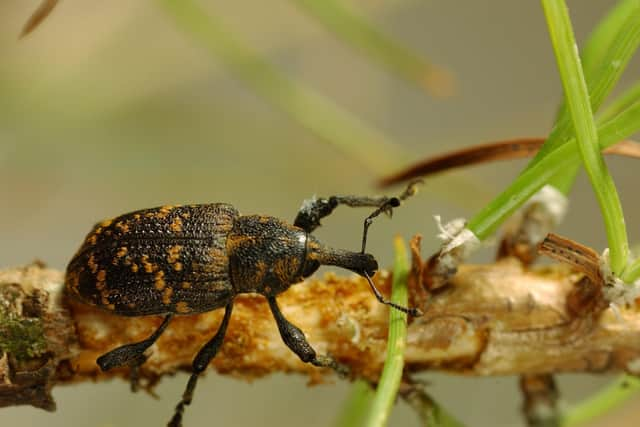Sustainable Scotland: Hi-tech system could help foresters battle infestations of tree-eating bugs
Pine weevils feed on the bark of saplings and can entirely wipe out young conifers on a site if left to run amok.
They are one of the biggest biological problems facing foresters in Scotland and across the UK, causing at least £5 million of damage each year – probably more.
Advertisement
Hide AdAdvertisement
Hide AdNow researchers are developing a digital monitoring system that could help tackle the problem and reduce the need for pesticides.
It will replace traditional hand-counting of the pests, saving time and effort.
It is currently being tested out in forests across the country, including plantations in Scotland, allowing foresters to identify and quantify the presence of the insects and formulate the best plan to deal with them.
The method involves placing weevil attractants in unique traps, known as Hylopods, which are spread across clearfell forest sites to attract and capture the insects.


A camera, using machine vision and artificial intelligence techniques, counts the insects and provides an alert through an IoT network if the area is deemed to be at high risk.
The system is being created by a consortium made up of Censis, Scotland’s innovation centre for sensing, imaging systems and IoT technologies; pest management company Sentomol; Forest Research, the scientific arm of the Forestry Commission; and the Natural Resources Institute at the University of Greenwich.
“Pine weevils are a big problem for Scotland’s commercial forests, but the options for managing them have been thin on the ground and heavily chemical pesticide dependent,” said David Loughlin, director at Sentomol.
“The system we have built will give land managers the ability to remotely monitor their forests and make more evidence-based decisions, rather than relying on collecting fresh wood piles and regularly manually counting the number of insects they find there.”


Advertisement
Hide AdAdvertisement
Hide AdPine weevils pose a particular danger in the first five years of a tree’s life, proving especially destructive to seedlings of pine and spruce – species commonly grown for the UK’s softwood timber market.
The beetles are found in all parts of Scotland and other key forest areas in the UK, as well as across most of northern Europe.
They have also been detected as far afield as Turkey, China, and even Japan.
Roger Moore, senior research scientist at Lothian-based Forest Research, added: “Protecting trees is of paramount importance to us and we do not want to use insecticides to tackle these insects unless we really have to.
“This system will give us the information we need to make the right decision about managing the problem of pine weevils in our forests as efficiently as possible.
“We successfully trialled an earlier prototype at a couple of sites and now want to roll this technology out more widely.”
Comments
Want to join the conversation? Please or to comment on this article.
